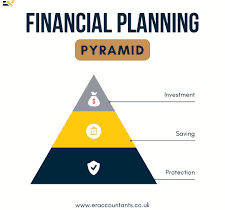Introduction
If you’ve ever searched for “feedbuzzard advertise”, you’re likely exploring new advertising platforms that promise effective reach, precision targeting and content-driven engagement. In the crowded world of digital marketing, distinguishing between generic ad networks and newer native/native-variant platforms is crucial — and that’s exactly where FeedBuzzard comes into play. This article will walk you through what FeedBuzzard offers, how it works, its pros and cons, and whether it’s worth your ad budget in 2025.
What Is FeedBuzzard?
FeedBuzzard is presented as a digital-publishing & advertising platform (via feed-style content) where brands can run native in-feed placements, sponsored posts, display formats and targeted campaigns. On its website the platform states that it curates content across categories like tech, lifestyle and business — and integrates advertising into that feed. ventsmagazine.co.uk+3Feed Buzzard+3Feed Buzzard+3 The emphasis is on content-driven advertising rather than overt banner ads alone. The “advertise” side of the platform offers for brands the opportunity to place their message inside these feeds, ideally blending more naturally with the user experience.
Why Choose FeedBuzzard Advertising?
Choosing to advertise with FeedBuzzard can bring several potential advantages. First, its model leans on native-in-feed formats which tend to generate higher engagement than standard display ads, because they appear more integrated with the user’s content flow. For example, FeedBuzzard describes a model in which “ads are displayed only to those who would find them relevant, hence increasing conversion rates.” Feed Buzzard+2Feed Buzzard+2 Second, the platform claims advanced targeting and analytics: from segmentation by behaviour/demographics to dynamic optimization in real time. Digital Era Innovators+1 Third, the flexibility in budgeting and pricing is positioned as friendly for smaller advertisers or businesses testing new channels. For instance, one article states that FeedBuzzard offers cost-effective solutions accessible to smaller businesses. technologymath.com+1 All of this together makes FeedBuzzard an interesting option if you are looking for alternatives to the big-platforms, especially for content-rich advertising campaigns.
FeedBuzzard Advertising Features
When you dig into what FeedBuzzard offers under “advertise”, here are the core features you’ll encounter:
- Native in-feed / sponsored content placements – Ads that blend into content feeds so they appear more editorial than overtly promotional. Feed Buzzard+1
- Display/banner and rich media ad formats – While native is a key focus, some sources also talk about standard display, video or rich-media ads within the FeedBuzzard network. DigitReboot+1
- Granular targeting and segmentation – The ability to reach audiences based on demographics, interests, behaviour, keywords, device types etc. DigitReboot+1
- Real-time or near real-time analytics & dashboards – Performance metrics like impressions, clicks, conversions, cost per action, and the ability to monitor and optimise. Digital Era Innovators+1
- Multi-channel integrations – Some mention that the ads can propagate across devices, apps, and integrate with social media and other networks for broader reach. ventsmagazine.co.uk+1
- Flexible budget & pricing options – Burgers for small and large advertisers, with the possibility of starting with a modest budget and scaling. technologymath.com
How to Advertise on FeedBuzzard (Step-by-Step Guide)
Here’s a generalized walkthrough to start advertising on FeedBuzzard:
- Create an advertiser account / contact the sales team: Start by registering on the FeedBuzzard site or filling a contact form. Feed Buzzard+1
- Define campaign objective: Choose what you want — brand awareness, traffic, leads, conversions.
- Upload creative / sponsored content draft: Prepare copy, visuals, CTAs aligned to the objective.
- Select targeting & set budget: Choose audience segments, geographic scope, device types, schedule and bid settings.
- Launch campaign: Begin the ad run and track performance via dashboard.
- Monitor & optimise: Use real-time analytics to adjust copy, creative, targeting, bidding and budget to improve results.
- Scale or iterate: Based on pilot performance decide whether to scale larger, pivot strategy or test different formats.
FeedBuzzard Ad Formats Explained
Understanding which ad format to use is key to success on FeedBuzzard.
- Native/In-Feed Ads: These appear inside the editorial feed, with look & feel similar to regular content but labelled as “Sponsored” or “Ad”. Good for engagement and less intrusive.
- Display/Banner Ads: Standard visual ads placed in sidebars, headers, footers or within network inventory. Useful for brand awareness.
- Video/Rich Media: Story-telling formats with motion or interactive elements – higher cost but potentially higher impact.
Recommended specs (based on sources): headlines of ~60-80 characters, strong visuals (16:9 or 1200×628px), clear CTA, and landing URL with UTM tracking. While FeedBuzzard doesn’t publish a full public spec sheet, tips from partner articles emphasise these best practices. technologymath.com+1
FeedBuzzard Pricing & Budget Options
One of the challenges is that FeedBuzzard does not appear to publish a full transparent rate card (at least not publicly). Advertisers are usually advised to contact sales for quotes. However, from marketing summaries we can glean approximate structure:
- Budget-friendly entry point so even small advertisers can test. technologymath.com
- Flexible pricing models: CPC (cost per click), CPA (cost per acquisition), or CPM (cost per thousand impressions) depending on objective. Digital Era Innovators
- Because targeting is granular and native placement quality is higher, expect costs to be competitive but variable based on niche, geographic targeting and momentum.
For best practise: start with a small pilot budget, measure ROI, then scale once metrics prove acceptable.
FeedBuzzard Analytics and Reporting Tools
Analytics is a major selling point of FeedBuzzard. Advertisers are given dashboards where they can monitor impressions, clicks, conversions, cost per conversion, CTRs, and even view segments performing better or worse. Feed Buzzard+1 You’ll want to pay attention to:
- Click-through rate (CTR): how many users clicked vs viewed.
- Conversion rate: how many of those clicks translated into your desired action.
- Cost per action (CPA): total spend divided by conversions.
- Return on ad spend (ROAS): revenue generated vs cost.
- Audience segments: which demographic/device/interest group is responding best.
- Time of day / day of week: schedule optimisation.
Use these metrics to pause poor-performing segments, reallocate budget, test new creatives and ultimately improve efficiency.
Pros and Cons of FeedBuzzard Advertising
Pros:
- Native-style placements often lead to higher engagement.
- Granular targeting and analytics give you more control.
- Flexible budget models allow smaller advertisers to test.
- Multi-channel reach and modern ad formats (video/rich media) supported.
- Potential for good ROI if you optimise well.
Cons / Considerations:
- Lack of widely verified independent case studies (so claims should be validated).
- No publicly published full rate card means budgeting may require negotiation.
- Learning curve for newer advertisers on format / targeting optimization.
- Because it’s less well-known than big networks, inventory might be thinner in certain niches or geographies.
- Ad fatigue or audience saturation if creatives are not refreshed.
FeedBuzzard Advertising Tips for Best Results
- Craft compelling headlines that resonate with your target audience and mirror their behaviour or pain point.
- Use high-quality visuals – native placements benefit from professional imagery or clean graphics.
- A/B test creatives: test two or more versions of ad copy/visuals to see what drives higher CTR or conversion.
- Include UTM tracking parameters in your landing URLs so that you can analyse performance outside the platform too.
- Don’t set and forget: monitor performance daily or every few days and adjust targeting/bid/creative accordingly.
- Refresh your creative every 2–4 weeks (depending on campaign size) to avoid ad fatigue.
- For smaller budgets: choose very specific targeting rather than broad; this helps gain data and insights for scaling.
- Always define your objective clearly (awareness vs conversion) and align your ad format and creative to match.
Common Mistakes to Avoid When Advertising on FeedBuzzard
- Launching a large campaign before testing: wasteful if you don’t know what works.
- Over-targeting or choosing too many segments at once; this dilutes data clarity.
- Neglecting to track and optimise: using the platform as a set-and-forget tool reduces effectiveness.
- Ignoring attribution and UTM tracking: you lose ability to benchmark against other channels.
- Using generic creative: if native ads don’t feel native (i.e., look too “salesy”), users may skip.
- Failing to refresh creative or rotate ads: leads to declining performance over time.
Real-World Use Cases & Success Stories
Various sources mention success stories: for example, one article cited a UK business growing 35% in 2024 by utilising FeedBuzzard’s targeted campaigns. technologymath.com+1 Another described a local café targeting geo-specific campaign via FeedBuzzard and increasing foot traffic by around 30%. Andover Coils While these are promising, they are not deeply audited case studies, so you should ask the vendor for recent campaign reports relevant to your niche.
Is FeedBuzzard Legit or Scam? (Transparency Check)
With any advertising platform you’re considering, legitimacy and transparency matter. Here’s a quick checklist for FeedBuzzard:
- Ask for a media kit with verified traffic/metrics.
- Request client references and recent campaign snapshots.
- Make sure the platform provides clear billing/invoice terms.
- Verify ability to export data or connect to your analytics tool for third-party tracking.
- Start with a small budget pilot to validate claimed performance.
Until you complete these steps, regard FeedBuzzard as a promising but not yet fully proven alternative to more established platforms.
Alternatives to FeedBuzzard Advertising
If you’re comparing options, consider more established native or content-distribution networks such as:
- Taboola / Outbrain — well-known, large inventory, transparent reporting.
- Social media in-feed ads (e.g., Meta – Facebook/Instagram, TikTok) — massive reach, strong targeting.
- Display networks like Google Display / Discovery — broad reach but less “native feel”.
FeedBuzzard may serve well as a complement or test channel rather than sole ad platform until you validate its metrics.
Final Thoughts
In summary, feedbuzzard advertise offers an intriguing proposition in the native/content-driven advertising space. Its mix of in-feed placements, targeting, real-time analytics and budget flexibility make it worthy of consideration — especially if you’re seeking alternatives to mainstream ad networks. However, because public information on rates and audited performance is limited, you should proceed cautiously, test small, and track everything carefully. If your campaign metrics – CTR, conversion rate, cost-per-action – stack up favourably, scaling up with FeedBuzzard could well be a smart move. On the other hand, if performance is weak or data is opaque, you may be better served by more established channels. Ultimately, your decision should hinge on real campaign data, not just vendor promises.
Do Read: Hartford Financial Planning for Charities: The Complete Guide to Sustainable Nonprofit Success






